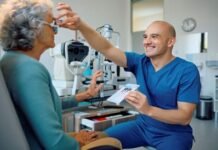The consciousness that identity feels misaligned with the bodily body can arrive slowly, through recollections, reflections, or quiet soreness that grows more visible through the years. Some describe it like hearing their name whispered from a distance, gradually becoming louder. This article explores the emotional and realistic route closer to gender-aligned transformation, which specializes in supportive care environments and meaningful clinical selections that help people specific their truest selves. Change starts offevolved quietly.
Early Personal Identity Reflections
The first stage of understanding identity often unfolds privately, before speaking to anyone about it. Thoughts collect, forming subtle questions about appearance, expression, and comfort. During this time, visiting a transgender clinic may become a consideration when the desire for guidance becomes clearer. The journey does not rush. It pauses. Sometimes identity feels fragile in its early shape, yet steady in its emotional truth. A quiet start.
Seeking Reassurance and Direction
Conversations with affirming professionals and supporting people can help establish a sense of grounding. The way toward trans surgery begins not with direct action but with discussions about needs, emotional readiness, and possible outcomes. Clinics often provide structured reviews that help people understand their feelings more clearly. The process may take slow, but clarity rarely arrives in one moment. Instead, identity unfolds step by step. A calm movement forward.
Clinical Environments and Understanding
A transgender clinic is often more than a medical space. It may become a place where expression feels validated and understood. Staff can help translate emotions into practical plans, offering pathways that consider mental, social, and physical alignment. For many, the experience feels protective, like finally entering a room where identity does not need to be explained repeatedly. Relief mixes with caution, forming a balanced progression. A gentle realization.
Emotional Weight of Physical Change
The decision to pursue trans surgery is deeply personal, continually influenced by lived experiences, daily discomfort and inner certainty. The moving weight can feel heavy and liberating at the same time. Some people describe the thought of physical alignment as breathing altogether for the first time. Healing is not only bodily; it touches memory, confidence and self-recognition. The modification has meaning beyond aesthetics. It becomes identity made visible.
Community Support and Shared Stories
Connecting with others through a transgender clinic or community groups can feel reassuring. Conversations with those who have walked similar paths provide shared language and emotional familiarity. It becomes easier to feel seen. Stories, advice, laughter, fears, and small achievements create a network of belonging. Community presence can offer grounding during uncertain days. Identity feels less isolated and more connected. A surprising warmth in unexpected places.
Life After Medical Alignment
Recovery from trans surgery often brings a gradual shift in daily life. Clothing may feel more natural, the mirror less unfamiliar, and interactions less strained. The world does not immediately change, but the internal terrain starts to feel clear. The journey does not obliterate the past; it changes its relationship to the present. Identity becomes steady, grounded, and lived rather than debated. A new chapter feels earned.
Conclusion
The path toward gender-aligned living involves emotional reflection, supportive guidance, and deeply personal medical decisions. For those seeking more information, nedatransgendersurgery.com can provide clarity and thoughtful direction. The process does not demand perfection or certainty from the start. Identity forms gradually, shaped by honesty and personal truth. Living authentically often begins quietly, growing stronger as the body and self finally speak the same language.


